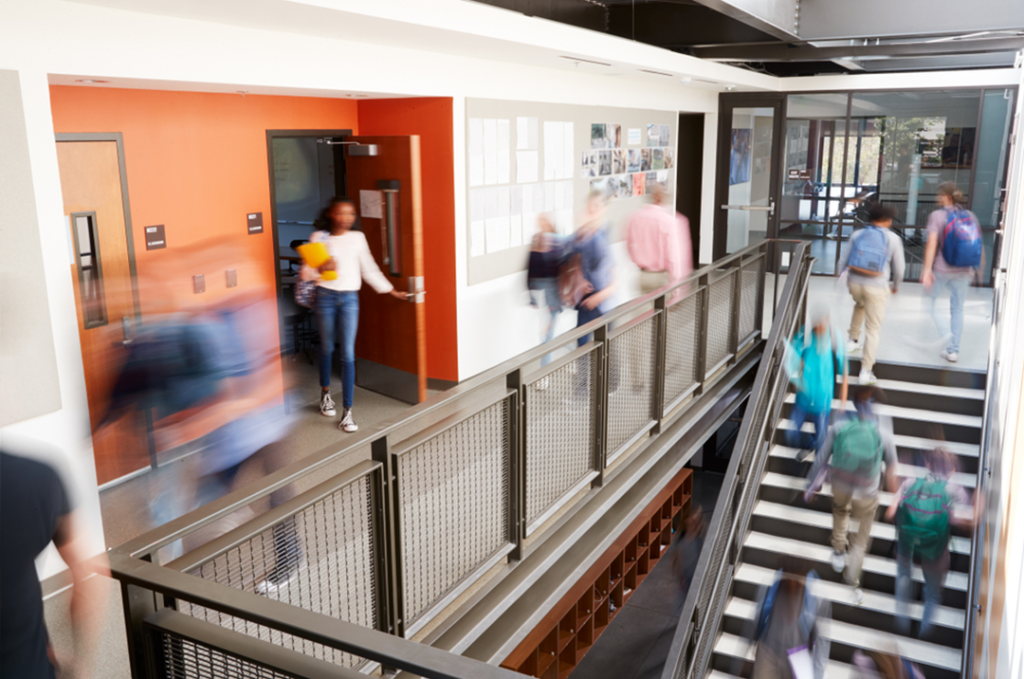Revitalizing School Environments: Creating Spaces Where Students Thrive

The Transformative Power of School Surroundings
A recent TLC blog post explored the impact of strategically using a school’s physical surroundings to create an environment where students can thrive. In the article, former principal and “educational disruptor” Hamish Brewer demonstrated the profound impact of revamping various physical aspects of his school building—energizing students and staff and promoting themes of connection and excellence. Brewer advocates that the physical environment can express a school’s core values and objectives, immersing students in a culture that encourages growth and learning.
The Perfect Time for Change: A Summer Reevaluation
With summer in full swing and buildings without the congestion of a typical school day, now is a great time for administrators to evaluate the messaging their schools are sending—and make some changes to promote core values, send positive messages, and foster a collaborative and connected school culture.
Strategically Revamping Your School’s Environment
Here are some steps for school administrators to assess how well a school’s physical environment is communicating the school’s message and values in each student’s experience:
- Start by identifying the key themes of the desired student experience at your school (Authentic? Relevant? Caring? Hopeful? Curious? Safe? Excellent?)
- Conduct a thorough walkthrough of the school, noting the physical aspects that contribute to the overall “vibe”. Things like furniture placement, signage, displays, lighting, and paint can contribute to the experience of students and staff within a school.
- Identify elements that either reinforce or contradict your desired messaging and note possible improvements that can be made in the short and long term
- Review the areas where students enter and leave the school, noting the first and last things they see. Evaluate how well these elements reflect the intended student experience and consider potential alterations to better communicate your school’s ethos.
Conceptualize. Collaborate. Create.
The next step is to become strategic in revamping the school building’s environmental message. This process may include short-term and long-term strategies, but here are some ideas to get you started:
- Develop a Vision: Develop a vision for your school’s physical environment based on the desired messages. Consider elements that will resonate with today’s students and be relevant to their lives.
- Involve the Community: Get the wider school community involved in your vision. Engage students, teachers, parents, and even local businesses. You could run competitions for design ideas or hold fundraising events for various projects.
- Create Immersive Experiences: Go beyond traditional classroom setups. Consider creating immersive learning spaces that can stimulate curiosity and engagement, such as technology-enabled classrooms, flexible learning areas, and outdoor learning spaces.
- Promote Stability and Consistency: Make the school environment a stable and consistent space for students, especially for those coming from chaotic backgrounds. This could involve having consistent routines, signage, and visuals around the school.
- Make Aesthetic Improvements: Simple aesthetic improvements can make a big difference. Consider a fresh coat of paint in uplifting colors, adding inspirational quotes on walls, displaying student artwork, or improving natural light.
- Prioritize Accessibility and Comfort: Ensure the physical environment is accessible and comfortable for all students. This can involve improving wheelchair accessibility, ensuring good ventilation, or adding comfortable seating options.
- Promote Connection with the Broader Community: Showcase the local culture, history, or community events within the school environment. This could be through displays, murals, or themed areas.
- Emphasize Visible Leadership: Leaders should have a strong presence in the school environment. Consider having a mobile office or holding regular walkabouts to interact with students and staff during the school day.
- Regularly Review and Update: The school environment should evolve with time to continue to be relevant and engaging for students. Regularly review the effectiveness of the environment and make updates as necessary.
Remember, transforming a school’s environment can be a significant undertaking, but even small, incremental changes can have a big impact over time. The ultimate goal is to create an environment that fosters a love for learning and helps students feel valued and connected.
About TLC
The Lincoln Center for Family and Youth (TLC) is a social enterprise company serving the Greater Philadelphia Area. Among its five divisions, TLC offers School-based Staffing Solutions, Mobile Coaching and Counseling, and Heather’s Hope: A Center for Victims of Crime. These major programs are united under TLC’s mission to promote positive choices and cultivate meaningful connections through education, counseling, coaching, and consulting.
About the Author
MaryJo Burchard (Ph.D. in Organizational Leadership) is co-founder and principal of Concord Solutions, a Virginia-based consultancy firm focused on helping leaders and organizations thrive while facing major disruption. Concord Solutions offers consulting, coaching, training, research, and keynote speaking surrounding trauma-informed leadership and assessing and building change readiness, trust, and belonging.